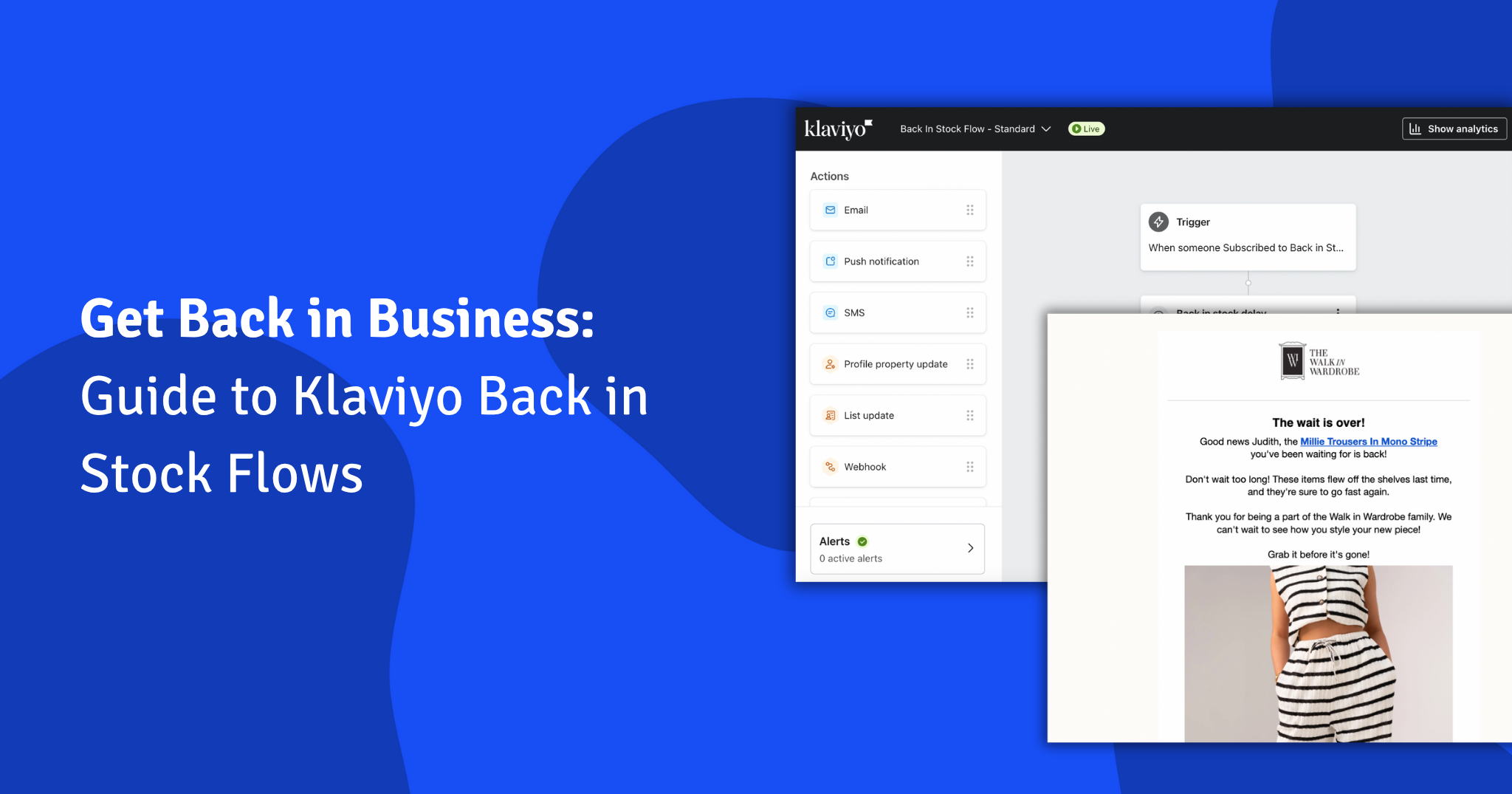With statistics indicating that online shoppers return about 20-30% of their purchases compared to only 8-10% in brick-and-mortar stores, it’s clear that a robust returns process is an integral, albeit challenging, part of an online store.
Furthermore, a staggering 92% of consumers surveyed said they would buy again if the product return process is easy, highlighting the importance of a seamless returns strategy.
That’s why we’ve created this comprehensive guide to help Shopify store owners navigate these complexities – turning the challenge of returns into an opportunity to enhance customer loyalty, improve retention, and drive repeat business.
The Art of Offering Incentives
Opt for Store Credit
Encouraging customers to choose store credit over refunds is a strategic move that benefits both the retailer and the shopper. It keeps the transaction within your ecosystem, prompting another purchase, and heightens customer satisfaction by offering a seamless solution to product dissatisfaction.
Discounts on Next Purchase
Implementing a discount on the next purchase as an incentive for returns can significantly ameliorate the customer’s experience. It turns a potentially negative return process into an opportunity for future engagement and sales.
Complimentary Returns for Store Credit
Offering free returns for customers who opt for store credit can dramatically reduce the friction associated with the returns process. This gesture of goodwill enhances the customer experience and encourages them to remain within your brand’s sphere.
Simplifying the Return Process
Clear Returns Policy
A transparent and straightforward returns policy is crucial for building trust and confidence with your customer base. Ensuring your policy is easily accessible and understandable can mitigate confusion and foster a positive relationship with your shoppers.
Hassle-Free Return Labels
The convenience of printable, easy-to-use return labels can significantly ease the return process for customers, making it more likely that they will shop with you again in the future.
Flexible Return Options
Providing a variety of return options caters to the diverse preferences of your customer base, offering them the convenience and flexibility they appreciate in a shopping experience.
Guiding the Customer Every Step of the Way
Step-by-Step Instructions
Providing detailed, step-by-step instructions for returns reassures customers, guiding them through the process smoothly and efficiently.
For example, this is fashion brand Cider’s returns instructions, which includes clear screenshots:
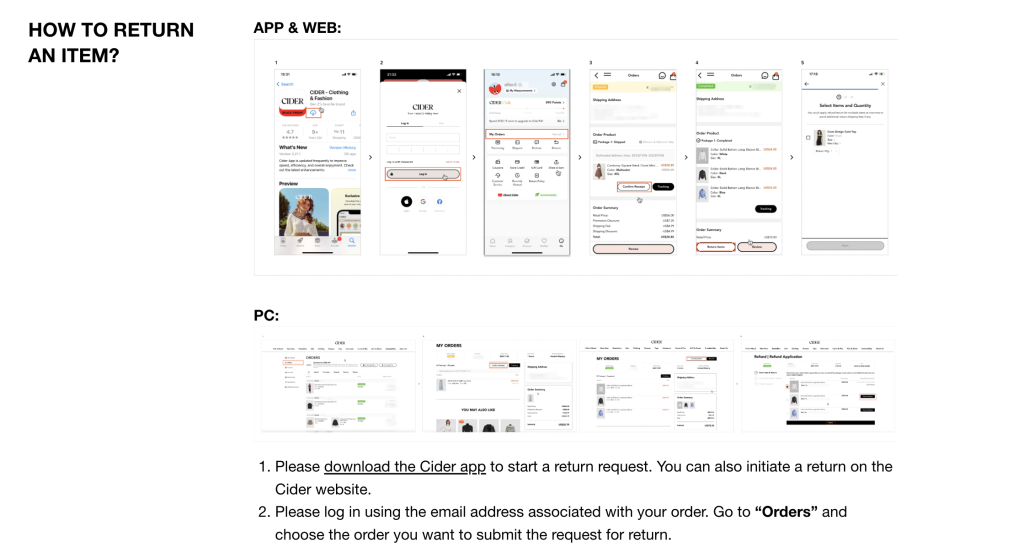
Proactive Customer Service
A proactive approach to customer service, anticipating and addressing customer questions and concerns before they arise, can significantly enhance the returns experience.
Establishing a Feedback Loop
Implementing a feedback loop is essential for understanding the reasons behind returns and for identifying opportunities to improve product offerings and customer satisfaction.
Top Returns Apps for Shopify
Leveraging the right tools can streamline your returns process, making it more efficient for you and more satisfactory for your customers. Here are some top Shopify returns apps:
- Postco 360: A versatile addition, Postco 360 offers a seamless return experience for both customers and retailers. With features like an integrated return portal, customisable policies, and comprehensive analytics, Postco 360 simplifies the return process. It also enhances the customer’s ability to return products without hassle, ensuring they remain more likely to return to the store for future purchases.
- AfterShip Returns Center: Automate and brand your returns process with this app, enhancing transparency and communication with your customers.
- Loop Returns: Specialising in exchanges, Loop Returns helps retain revenue by recommending products that better suit the customer’s needs.
By integrating these applications into your Shopify store, you can significantly improve the efficiency of your returns process, turning potential negatives into positive customer experiences and loyalty opportunities.
Example of Return pages
So, now that we know how we might set up our returns process, how should it look to customers? As with all web pages, they should designed to be easily understood, navigated, and, in this particular case, completed.
Let’s look at a few different brands to see how they have set up their return pages:
ASOS
ASOS’ return process starts with getting customer feedback. This includes a dropdown for “Reasons for Return” (such “Doesn’t suit me” and “Too small”) and then space for additional info.
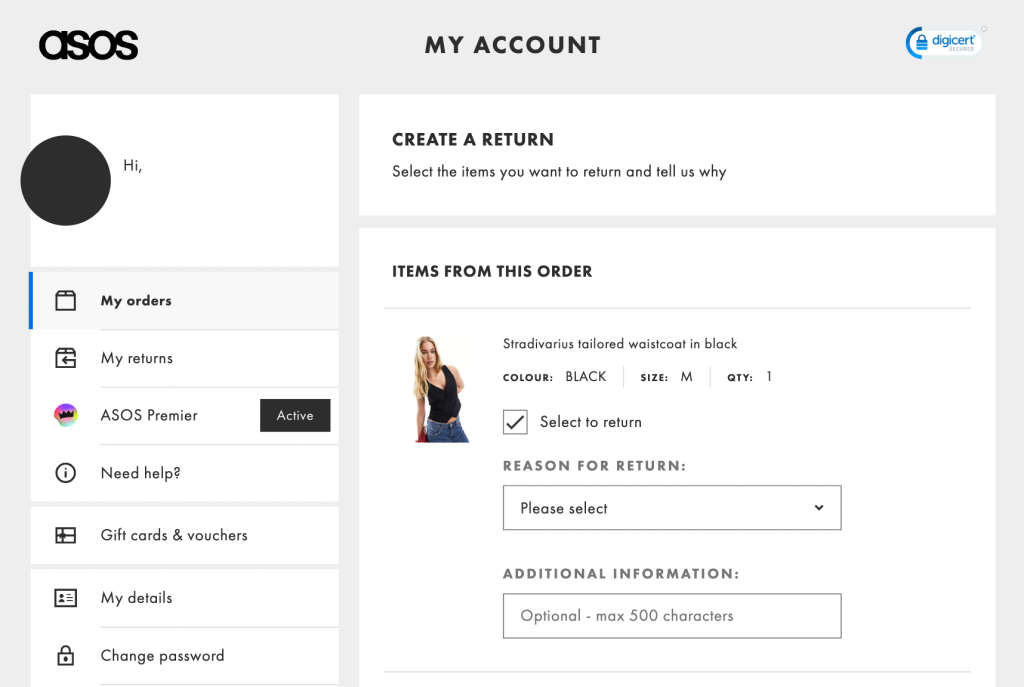
Plus, ASOS sends customers emails to update them on the returns process, including
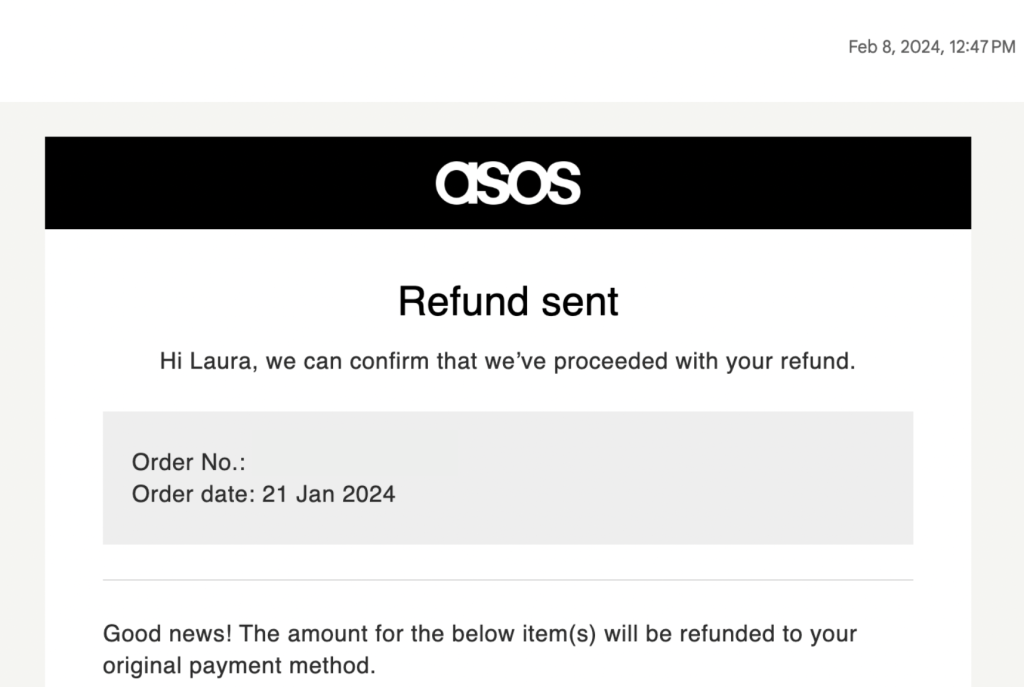
Walk in Wardrobe
This is a simple beginning page for fashion brand Walk in Wardrobe, which asks customers for their order ID and order email. They’ll then be able to start their return here and this also keeps things nice and simple by avoiding having the conversation via a different customer service portal or email.
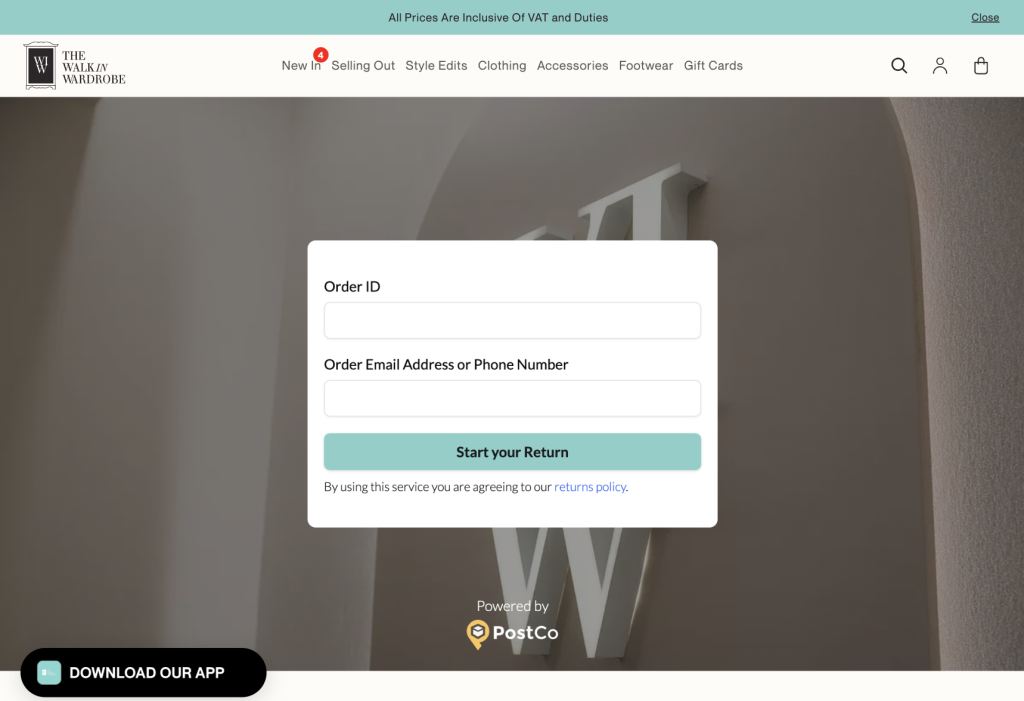
ZARA
Zara’s return policy has a detailed terms and conditions so that customers always know how and when to make their return order.
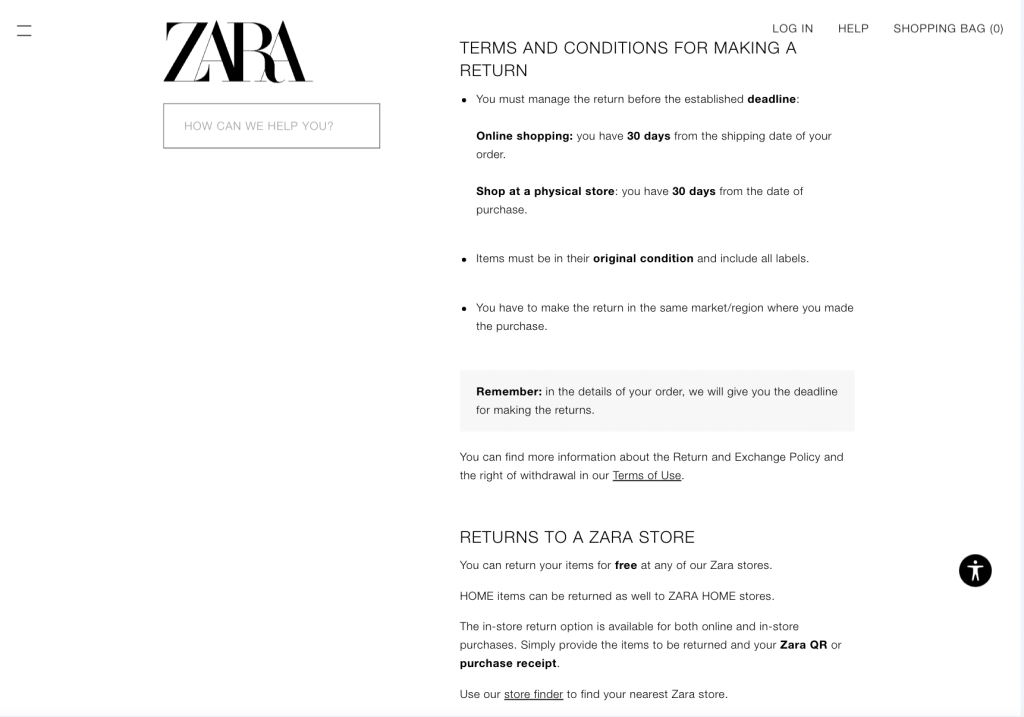
ARKET
As a global brand, ARKET has a long dropdown of varying returns policies based on the customer’s country, followed by numbered instructions for how to complete a return. This keeps things especially clear for customers. You can see an example of the returns policy for the UK here below:
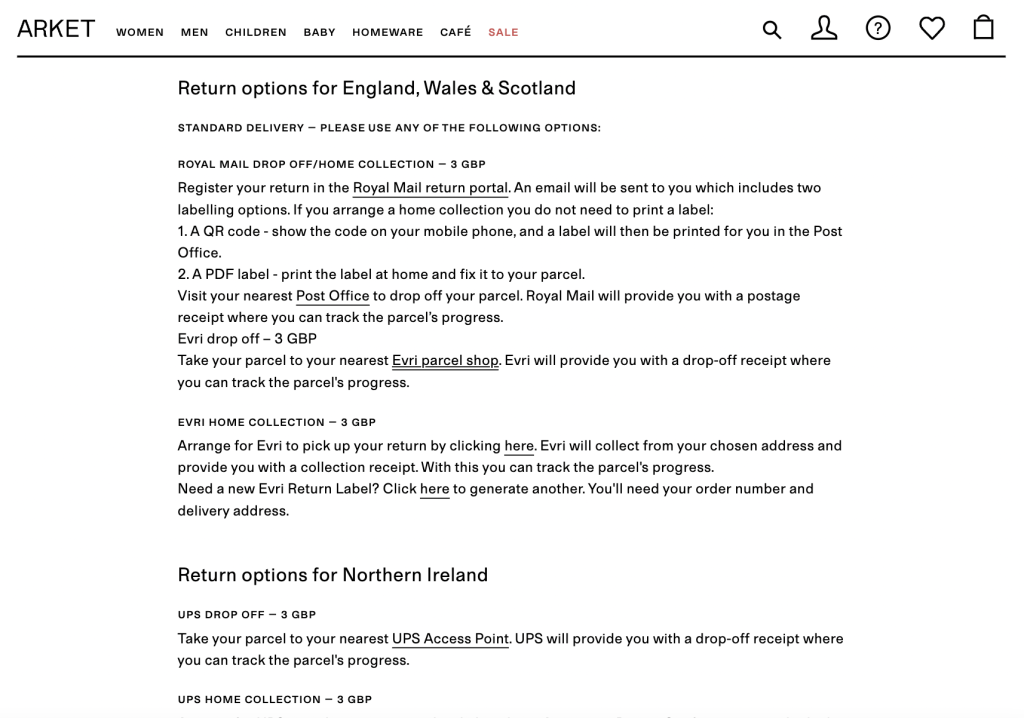
River Island
Again, River Island keeps things very clear by allowing customers to start their return via the returns policy web page, and also showcases the three different ways customers can return products, with added tips.
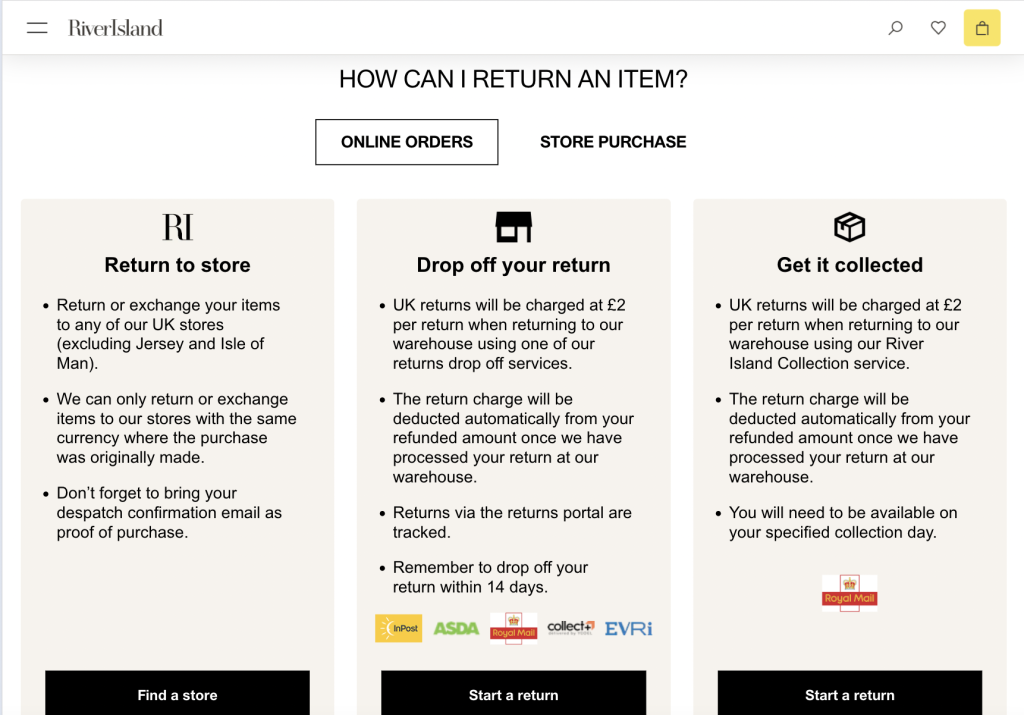
Conclusion
Effectively managing returns is crucial for the success of any e-commerce business. By implementing these best practices and utilising the right tools, Shopify store owners can turn the returns process into a positive aspect of the shopping experience, fostering loyalty and encouraging repeat business.
For queries about Shopify and building your own e-commerce store, please contact us. We’re happy to help—contact us today.
If you are interested in further news and information about Shopify, consider signing up for our email newsletter, Shopify Insider.


